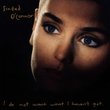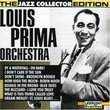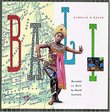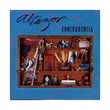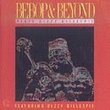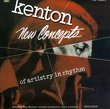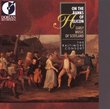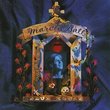| All Artists: Mort Weiss Title: The B3 and Me Members Wishing: 0 Total Copies: 0 Label: Sms Jazz Original Release Date: 1/1/2006 Re-Release Date: 9/12/2006 Genres: Jazz, Pop Style: Cool Jazz Number of Discs: 1 SwapaCD Credits: 1 UPC: 678277133822 |
Search - Mort Weiss :: The B3 and Me
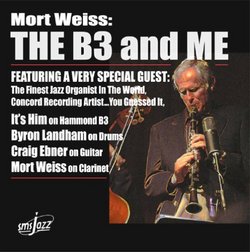 | Mort Weiss The B3 and Me Genres: Jazz, Pop
|
Larger Image |
CD DetailsSimilarly Requested CDs
|
CD ReviewsBambi Meets Godzilla Samuel Chell | Kenosha,, WI United States | 10/24/2006 (5 out of 5 stars) "Mort Weiss is the Rip Van Winkle and Thomas Edison of jazz, a musician who dropped out of the scene and ignored his clarinet for forty years before making an incredible, possibly unprecedented comeback, then almost immediately achieved another first: complementing the diminutive woodwind with the Hammond B3 organ.
Although the real story behind "The B3 and Me" is the music on the disk itself, the peculiar history surrounding the date deserves at least some passing mention. The album was all set to go in the summer of 2003--distributors lined up, accompanying club dates and radio promotion scheduled, album art and marketing arrangements all but finalized--when Concord decided the release of Mort's album would be in competition with a CD featuring the organ star contracted to Concord. Hence, the plug was pulled on the project until, following considerable personal expense in time and money, Weiss was able to work out a deal permitting the release of "The B3 and Me" featuring "It's Him" (Joey DeFrancesco, the "Oscar Peterson of the Hammond," one of the stipulations being that neither the name nor photo of the organ star could be shown on the front cover). So now we have the opportunity to hear Joey Defrancesco's potentially overpowering instrument with the apparently overmatched clarinet of Mort Weiss (or of any player of this comparatively neglected instrument since the days of Benny Goodman). The results aren't so much shocking as confirmation of the good judgments of both artists. The opener, "Ornithology," is an impressive harbinger of what's to come, with B3 and clarinet in perfect sync--sonically and rhythmically. By the second tune, Van Heusen's "I Thought About You," you're addicted--to the sound of this unusual pairing but above all to the foot-tapping overall good vibes of a session that combines coordinated, empathetic playing with the loose and spontaneous feel of a blowing session. DeFrancesco is not one of those numerous organists who limits himself to a mere one or two sounds out of the myriad possibilities available on his tonal palette. On Victor Young's "Love Letters" he pulls out all the stops, summoning up emotions ranging from soft-spoken whispers to passionate embraces, going from chamber-music intimacy to operatic-aria dramatics, then activating the Leslies and sweeping us on a rapturous glissando into the meditative, personal dynamic domain of Weiss' clarinet. It's doubtful, moreover, that any organist pumps the bass pedals with more authority, whether on the aforementioned ballad, a medium-tempo "Billy's Bounce," or a rampaging "You Stepped Out of a Dream." Translation: he swings his tail off. Weiss' singular clarinet sound is beautifully recorded on the present CD. His tones are vintage, cured, complex--his sustained notes, especially in the mid-register, phosphorescent and alive, suggesting the playful movement of frequencies even when a single note is held. Despite an unaggressive, delayed attack, he possesses deceptive technique, perhaps not matching DeFrancesco's adventurous harmonic-melodic ideas but keeping up with him in speed. The rhythm section is DeFrancesco's crack unit at the time. Guitarist Graig Ebner aims musical bullets with the purposeful accuracy of a Jimmy Ponder or Pat Martino. Byron Landham certainly knows how to lock in with the organist's left foot but also demonstrates a control of dynamics distinguishing him from most B3 drummers; in fact, he's one of the main reasons that DeFrancesco can scale his massive machine not only to match Weiss' overachieving miniature instrument but to achieve an expressive range of colors not normally associated with the B3--at least as it is commonly played. But then again, there's little about this extraordinary session that's "common."" |

 Track Listings (9) - Disc #1
Track Listings (9) - Disc #1
